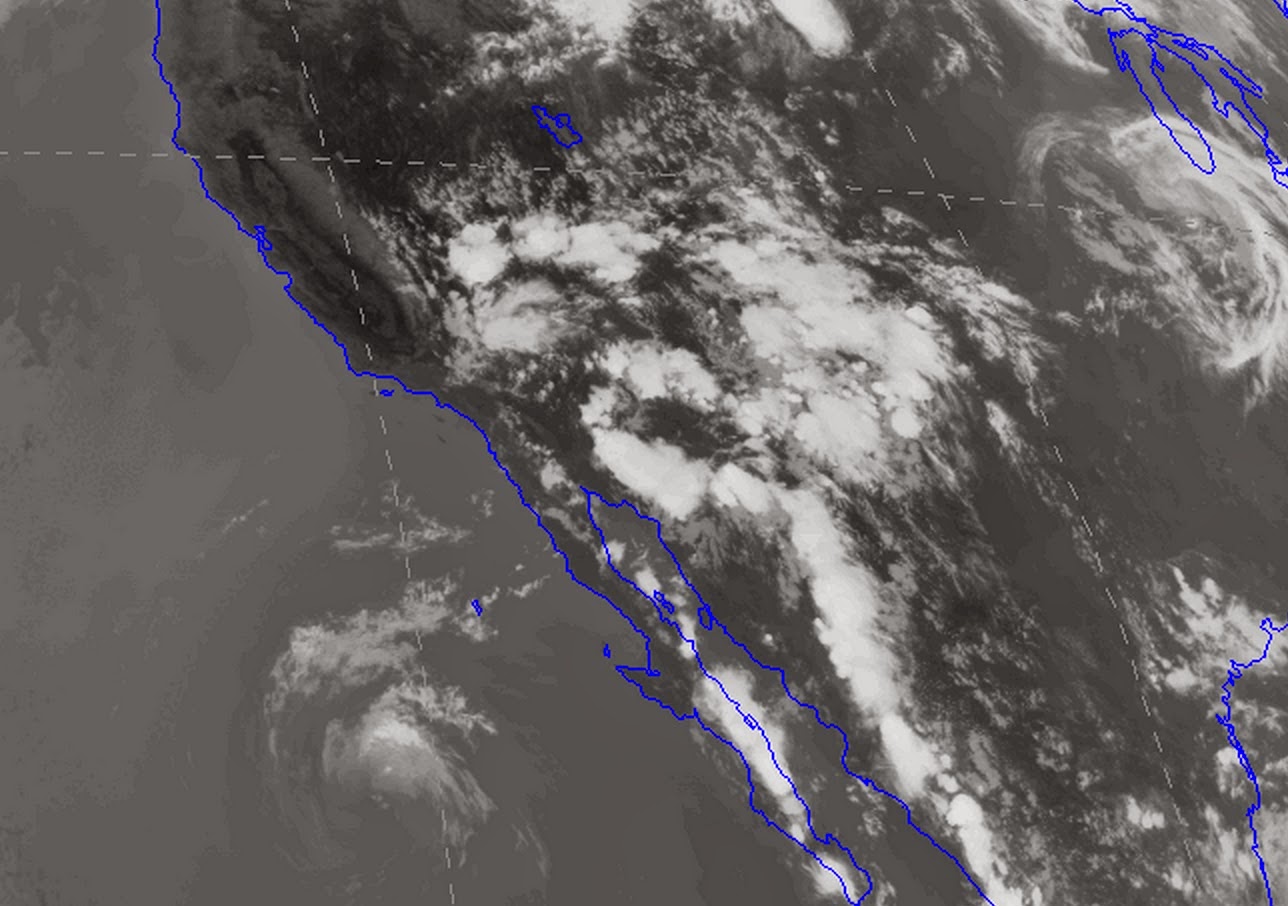The last two days we had light precipitation over the the Northwest part of the state as weak frontal systems skirted by the Olympic coast and more directly hit SW British Columbia. To illustrate, here is the 24-h precipitation totals ending about 9 PM Saturday night (there is on problematic observation in purple...ignore). Most of the lowlands north of Seattle got a few hundredths of an inch (yes, I know, that is not want you want on your barbecue), with higher amounts on the NW corner of the Olympics.
But consider the same period over the southwest U.S. (see image). Lots of folks got several tenths of an inch, with some over a half inch--virtually all from thunderstorms. This is now the time of the Southwest Monsoon, when moist, unstable able pushes northward over Arizona, New Mexico and nearby states. In a typical July, Seattle is drier than Phoenix.
To illustrate what is going on, here is an infrared satellite late Saturday afternoon. You can see many thunderstorms from northwest Mexico into our Southwest.
The classic transition appears to be occurring: the Northwest looks dry the next week, with temperatures at or slightly above normal. Let me show you a fun plot: the total precipitation forced by the National Weather Service GFS model over the next 5 days (starting 5 AM this morning). A bit of light showers over NW Washington (that is from today!), but most of the NW is dry, with the exception of a few showers over SE Oregon. The Southwest Monsoon is very evident as is the thunderstorm precipitation over the eastern half of the U.S.
On another topic, local pollution sensors observing the number of particles less than 2.5 microns in size, clearly picked up the fireworks smoke (see below). Most locations have a single peak late on July 4th, which makes sense. Only Marysville, near Boom City (where a local tribe has a large sales and "testing" facility) is there a double peak. My hypothesis: a lot of folks go up there and buy fireworks that they try out during the day. That is the early peak. And then the second peak is the normal end of day fun.
I will be giving a talk
Global Warming, the Media, and Coal Trains
in Friday Harbor and Eastsound, sponsored by the San Juan Island and Orcas Is. libraries.
I will be talking about the serious threat of global warming, how the media is generally doing a poor job in educating about this issue, and how mankind is really not taking it seriously (e.g., the coal trains).
Friday Harbor: July 22nd, 6:30 PM, The Mullis Community Center, 589 Nash St.
Orcas Island: July 23rd, 5:30 PM, Orcas Center















No comments:
Post a Comment